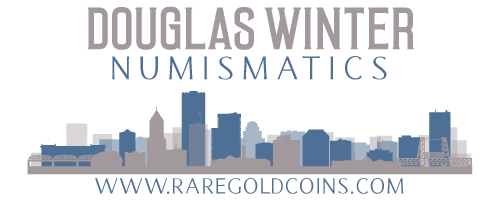Revisiting The 1841 Quarter Eagle
/A few years ago, I wrote a blog about 1841 quarter eagles that basically stated that the currently-accepted belief that all of the known examples were Proofs was wrong. After recently being able to examine no less than four 1841 quarter eagles at one time, I am now totally convinced that this issue exists in two distinct formats. Numismatic tradition states that the 1841 quarter eagle was struck only as a Proof. This has never made sense to me. With as many as 15-17 pieces known, why would the Mint have made so many Proofs in 1841 when virtually none were struck in any other year between 1842 and 1853? And why would most of the survivors be in such low grades (EF40 to AU50) when most of the Proof gold coins from the 1840's that still exist tend to be in reasonably high grades?
This enigma has become a semi-obsession of David Hall's and when you are the head of Collector's Universe/PCGS you can get things done. David was able to wrangle four different examples of the 1841 quarter eagle including a PR60 illustrated below. A few weeks ago, one of his security detail flew the four coins up to my office in Portland and I am now more convinced than ever that 1841 quarter eagles exist in two formats.
First, a few words about the Proofs. One of the main reasons that you can determine that a Proof 1841 quarter eagle actually is a Proof is that is “looks like one.” These coins are not weakly struck, nor is there any question about whether they have squared edges or incomplete reflectiveness to the fields. These coins look just like other Proof gold coins from the 1840's. They may have some mint-made flaws such as pits in the planchet or lintmarks but their appearance is not much different than Proofs from the latter part of the 19th century either.
There appear to be just three or four Proofs known. The finest is a PCGS PR64 owned by a prominent Texas collector that is ex Heritage 6/04: 6204 where it brought $253,000; it was earlier in the Eliasberg sale and it sold for $82,500 in October 1982. The second Proof is owned by a customer of mine and it is graded PR60 by PCGS. I purchased it out of Bass II in October 1999 and paid $110,000 for it. A third Proof is in the Smithsonian. I have not seen the coin in person but it has been confirmed by Jeff Garrett whose opinion I respect. A possible fourth Proof is the ex Davis-Graves coin that was last sold as Superior 2/91: 2664 at $66,000. This coin might be the piece that appears in the PCGS population report as a PR62.
When I recently examined the Eliasberg and Bass Proofs, I made the following observations about them. I’m certain they apply to the other one or two Proofs as well.
*Proof 1841 quarter eagles have fully reflective fields that look like Proofs should. They are not "semi-prooflike" or "mostly prooflike." They are Proofs, no ifs and or buts.
*On Proof 1841 quarter eagles, there is sharpness of strike on the curls below the ear of Liberty. This sharpness does not appear on business strikes.
*The texture on the face of Liberty is different on Proofs. This may be attributable to the fact that the luster pattern on the cheek has not yet been worn off as it has on circulated business strikes.
*The curls on the back of the neck have a bold, almost three-dimensional look on Proofs. On business strikes they are not as sharp.
*On the Proofs the edges are sharp and fully squared. They are not as sharp and clearly not fully squared on business strikes.
I can quickly summarize why I think the lower grade 1841 "proofs" are not proofs at all and were clearly produced as business strikes (but using the same dies as the Proofs).
First of all, logic dictates that there are just too many 1841 quarter eagles known for all these coins to be Proofs. The number of coins that I feel are real Proofs (three or four) is consistent with the number known for other Proof quarter eagles from the 1840's. It just doesn’t make sense that the Mint would have made 30 or so Proofs in 1841 but five or so (if that) in every other year during the 1840's. Could they have been struck for a special occasion? It's possible but I have always doubted this reason and until documentation is found that states that they were made to commemorate an event or to give to VIP's, I am skeptical at best.
Secondly, many of the surviving 1841 quarter eagles are very low grade; in the Fine to Extremely Fine range. I have never seen or heard of another Proof quarter eagle from the 1840's that was this impaired.
Thirdly—and I believe most importantly—the business strikes, while Prooflike, just don’t "look" like Proofs. The marks on them don't fall in the same pattern that you see on Impaired Proofs; i.e., they look like circulated business strikes. As I stated above, they are not as well struck as the unquestionable Proofs and lack the squared rims and bold central details that are found on the true Proofs. They just don’t look or "feel" like Proofs.
In my opinion, David Hall and PCGS are to be credited for bringing this issue out into the opinion. It will be interesting to see if PCGS starts categorizing 1841 quarter eagles as Proofs and circulation strikes/business strikes and it will be interesting to see if the market starts according a premium to the Proofs as there should be, given their greater rarity.












